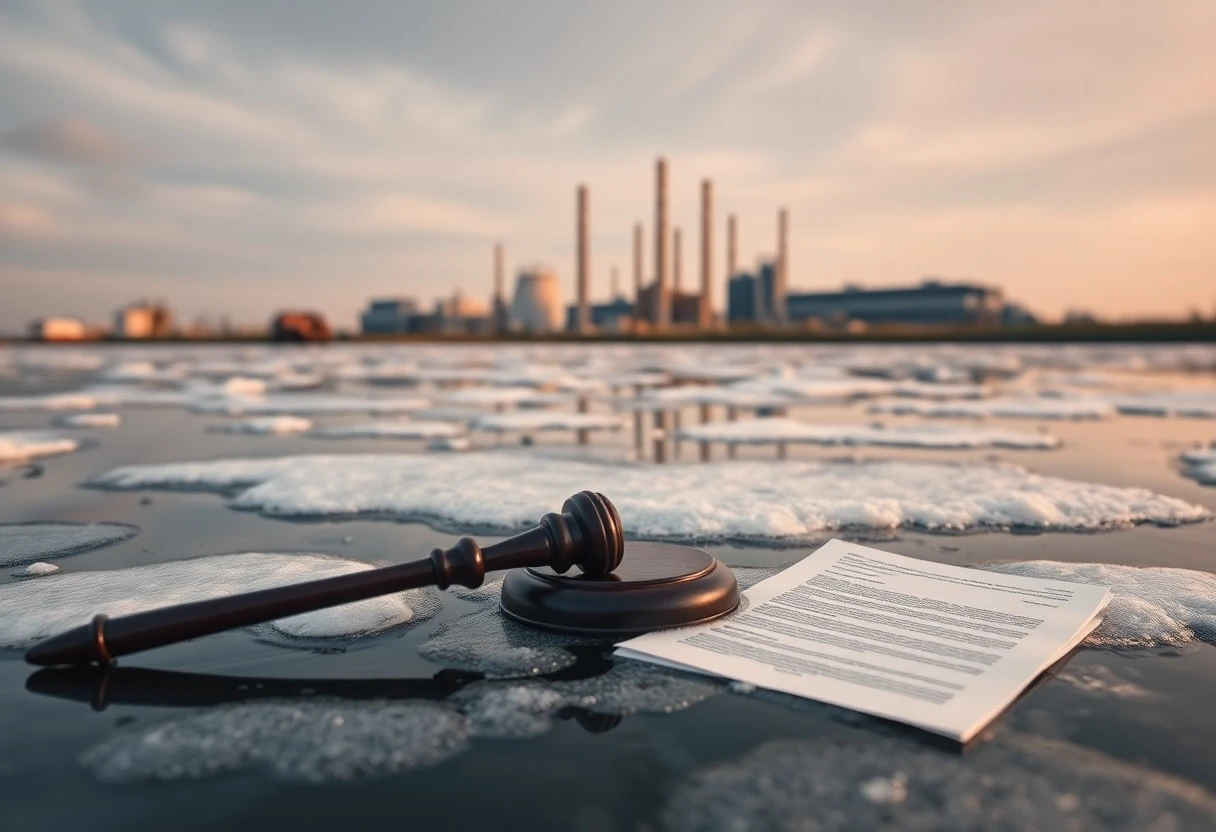AFFF, or aqueous film-forming foam, has been widely used in firefighting but can lead to serious health issues when contaminated. In your quest for justice, it’s vital to understand how to identify signs of negligence in an AFFF contamination lawsuit. This guide will equip you with the knowledge needed to assess factors like improper usage, lack of safety measures, and failure to warn those at risk. By recognizing these elements, you can strengthen your case and advocate effectively for your rights.
Understanding AFFF and Its Risks
While AFFF, or aqueous film-forming foam, plays a pivotal role in firefighting, it poses significant risks to public health and the environment. Initially developed to combat flammable liquid fires, its chemical composition raises serious concerns regarding contamination and long-term exposure. Familiarizing yourself with these risks is imperative if you are navigating an AFFF contamination lawsuit.
What is AFFF?
Some firefighting agents, particularly AFFF, contain per- and polyfluoroalkyl substances (PFAS), known for their water and grease-resistant properties. These substances make AFFF effective in suppressing flames but also contribute to their persistence in the environment and potential health hazards to individuals exposed to contaminated sites.
Health and Environmental Impacts
There’s a growing body of evidence pointing to the detrimental effects of AFFF and its associated PFAS chemicals on both human health and the environment. Studies have linked PFAS exposure to various health issues, including cancer, increased cholesterol levels, and immune system dysfunction. Moreover, contaminated water supplies present severe risks to local wildlife and ecosystems, disrupting food chains and leading to long-term ecological consequences.
This contamination can infiltrate soil and water systems, posing a threat to drinking water sources and potentially affecting your health if consumed or absorbed through the skin. The troubling persistence of these chemicals in the environment means that even low-level exposure can accumulate over time, leading to serious health issues. It’s vital that you are aware of the potential long-lasting effects of AFFF exposure, as communities across the nation face similar contamination challenges.
Identifying Negligence in AFFF Contamination
Even when investigating AFFF contamination, recognizing negligence is vital for your case. It involves examining the actions and responsibilities of those using or managing AFFF, ensuring they adhered to established safety standards. Your understanding of negligence will guide you in identifying improper conduct that may have led to exposure and related health issues.
Defining Negligence
For your purposes, negligence refers to the failure of an individual or organization to take reasonable care, resulting in harm or damage. In terms of AFFF contamination, this means assessing whether those responsible for the use or handling of AFFF took appropriate steps to protect both people and the environment from its hazardous effects.
Common Signs of Negligence
To spot potential negligence in an AFFF contamination case, look for key indicators, such as the improper storage of AFFF, lack of safety protocols, and absence of regular inspections. These elements can reveal lapses in responsibility that may have led to harmful consequences for you and your community.
AFFF exposure may indicate negligence when safety measures are inadequate or ignored. If you notice inconsistent training for personnel handling AFFF, absence of contamination monitoring, or failure to report leaks, these are significant warning signs. Collectively, they can help strengthen your case by highlighting the negligence that contributed to your exposure and potential health risks.
Key Factors to Consider
Assuming you are evaluating a potential AFFF contamination lawsuit, consider the following key factors:
- Source of contamination
- Duration and extent of exposure
- Health effects
- Documentation
- Legal precedents
Recognizing these factors can significantly enhance your understanding of negligence in AFFF cases.
Source of Contamination
Consider the origin of the contamination when assessing your case. Identifying the source—whether it’s military installations, firefighting training facilities, or industrial sites—is vital in pinpointing responsible parties and determining liability.
Duration and Extent of Exposure
Exposure to AFFF can vary significantly among individuals, impacting potential claims. Understanding the timeframe and area in which you or others may have been exposed is crucial in establishing a link to any health issues.
Understanding the duration and extent of exposure to AFFF is important to your case. Short-term exposure might present different risks compared to prolonged contact, which often leads to more severe health complications. The longer you were in contact with contaminated sites, the higher your risk of developing serious ailments. Furthermore, recognizing the quantity of AFFF involved can help indicate the potential health risks you face, as higher levels of exposure generally correlate with more severe effects. It’s crucial to gather as much information about your exposure history as possible.
Gathering Evidence for Your Lawsuit
Not all evidence is created equal, so it’s important to gather solid, well-documented proof to support your AFFF contamination lawsuit. Start by collecting records of your exposure history, including any incidents involving firefighting foam use. Your evidence should demonstrate how exposure has affected you and your environment. Use photographs, expert opinions, and witness statements to strengthen your claim and validate the impact on your life.
Documenting Personal Health Effects
While preparing for your lawsuit, it is important to document any health effects you have experienced due to AFFF exposure. Keep a detailed record of symptoms, medical visits, and diagnoses. This documentation will serve as critical evidence linking your health issues to the contamination, helping to substantiate your claims in court.
Collecting Environmental Data
Personal experiences alone may not fully illustrate the extent of AFFF contamination’s impact. Gathering environmental data is equally important. This can include soil and water tests from the affected area, air quality measurements, and any relevant government reports on contamination levels. Such data can bolster your case by showcasing the broader implications of AFFF use and its hazardous effects on health and the environment.
Understanding the magnitude of AFFF contamination involves analyzing the environmental data you collect. You should focus on testing results that reveal the presence and concentration of per- and polyfluoroalkyl substances (PFAS) in water and soil surrounding your area. Specific tests that demonstrate high levels of contamination can strengthen your case. Engage environmental experts who can interpret the data and provide testimony if necessary. This information not only highlights the contamination’s potential dangers but also reinforces your claim about the serious risks associated with AFFF exposure.
Tips for Strengthening Your Case
For building a strong foundation for your AFFF contamination lawsuit, consider the following strategies:
- Document all evidence related to your exposure.
- Gather medical records linking health issues to AFFF exposure.
- Keep a record of any communication with affected parties.
- Engage with local communities to find similar cases.
- Maintain consistent communication with legal counsel.
Assume that these practices will enhance your position in court.
Engaging Legal Experts
For maximizing your potential for success, partnering with experienced legal experts in AFFF contamination cases can prove invaluable.
Consulting Environmental Specialists
To bolster your understanding of the environmental implications of AFFF exposure, consulting with environmental specialists is necessary.
Engaging with these specialists can provide insights into the contamination pathways associated with AFFF and the health risks involved. They can also assist in gathering necessary data that illustrates the extent of environmental damage in your area. With their expertise, you can strengthen your case by demonstrating the significant impact on both health and community due to AFFF use. This empirical evidence can be pivotal in proving negligence and the harmful repercussions of inadequate safety measures.
Navigating the Legal Process
Now that you understand the basics of AFFF contamination, it’s time to navigate the legal process. This journey can seem overwhelming, but knowing the steps involved will help you feel more confident as you pursue justice. Understanding how to gather evidence, file your lawsuit, and communicate with legal professionals is crucial to your case’s success.
Steps to Initiate a Lawsuit
To begin your lawsuit, start by consulting with a qualified attorney who specializes in AFFF contamination cases. They will guide you through the necessary steps, including gathering relevant evidence, identifying liable parties, and filing the complaint. It’s important to act promptly, as there are time limits for filing your claim.
Understanding Your Rights
While navigating this process, it’s vital to understand your rights as a victim of AFFF contamination. You have the right to seek compensation for your medical expenses, lost wages, and emotional distress. Moreover, you can hold responsible parties liable for their negligence in exposing you to harmful chemicals.
With knowledge of your rights, you can make informed decisions throughout the legal process. You are entitled to access information regarding your case, including the status of your lawsuit and relevant legal documents. Additionally, if your attorney helps you build a strong case, you have a better chance of receiving a favorable outcome, ensuring that you are not left to face the consequences of negligence alone.
Summing up
With this in mind, when assessing negligence in an AFFF contamination lawsuit, you should carefully evaluate the actions of all parties involved, including manufacturers, employers, and any regulatory bodies. Investigate whether proper safety protocols were ignored or if there was a failure to inform about the risks of AFFF exposure. Collect evidence, such as documentation of past incidents, expert testimonies, and health records, to strengthen your case. By understanding these aspects, you can determine liability and enhance your chances of a successful claim.

















